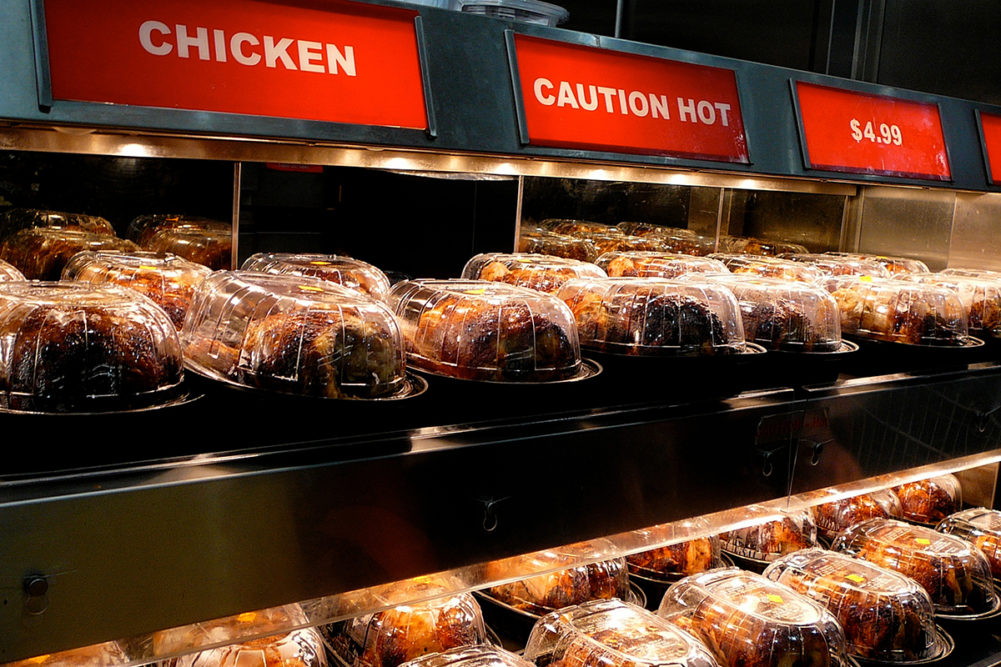Americans love to eat in restaurants — or, increasingly in the digital age, to have restaurant food brought to them.
When COVID shut down most US restaurants, we all had to adjust. Many discovered their inner home chef. Others ramped up their frozen purchases.
And then there were those many Americans somewhere in the middle, who still wanted to eat fresh, tasty foods but maybe didn’t have the ambition to be the next Julia Child. When restaurants reopened, a lot of those middle-grounders also realized they didn’t miss restaurant prices.
Instead, they kept on buying what they had turned to increasingly during the pandemic: ready-to-eat or heat-and-eat convenience meal items from their supermarket deli, aka retail foodservice options.
A recent study from Arlington, Va.-based FMI – The Food Industry Association backs up the anecdotal evidence: demand for retail foodservice is surging, and shows no signs of letting up.
While most shoppers (57%) are purchasing the same amount of grocery deli-prepared foods as last year, 25% are purchasing more, according to the study, “The Power of Foodservice at Retail,” written for FMI by consultant David Orgel.
“Foodservice at retail has gained considerable momentum,” according to FMI. “It’s a star within the overall deli foodservice department.”
The surge is largely driven by larger households, millennials and urban dwellers, according to the report. Gen Z and millennial shoppers in particular are more likely to make separate trips to stores for foodservice.
Convenience also plays a huge role. Shoppers are seeking convenient meal options and embracing strategies that differ by meal occasions.
“Most favor a hybrid approach of mixing different types of dinner meal prep styles — from scratch to prepared meals,” according to FMI.
It’s also hard to overstate the importance of health and well-being considerations in the rise of retail foodservice. Consumers are increasing their emphasis on healthier foodservice offerings and looking for retailers to meet these needs — but only about a third are very satisfied with the nutrition level of offerings.
Inflation’s long shadow
Another of the report’s key insights is that inflation is driving meal strategies in a huge way for Americans.
Shoppers are preparing more dinners at home — and focusing more on weekly meal planning and scratch cooking — at this time of higher inflation, and weekly meal planning is well ahead of pre-pandemic. During the pandemic, shoppers learned new cooking skills that are now helping them save money.
It all adds up to big opportunities for retailers looking to bolster their retail foodservice offerings, according to FMI. Among the recommendations:
Place Emphasis on Value: At a time of high inflation, consumers (53%) say grocery deli-prepared foods are a good value compared to eating at a restaurant or ordering takeout. Retailers can pursue and communicate value strategies — such as meal deals and bundles — to drive additional sales and trial.
Put Retail Foodservice on the Radar: Foodservice at retail isn’t a meal option that comes to mind for many consumers. Asked why they would buy restaurant vs. grocery deli-prepared foods, 43% said that while the latter is a good option, they just don’t think about it. Retailers need to raise the profile of their foodservice offerings in-store and through their communications channels.
Enhance the Role of Primary Stores: Most shoppers purchase their deli-prepared foods from their primary store, but 12% go to a specific store that is not their primary store. Retailers losing this business should evaluate what strategies would improve their foodservice reputations, including with signature items that attract consumers.
Emulate Restaurant Strategies: Retailers can boost loyalty and better compete with restaurants by thinking more like restaurants. This means creating more convenient, omnichannel shopping experiences — from apps for ordering to drive-through and pickup strategies.
Boost Meal Creativity: Retailers can build on proven store strategies that include meal bundling, theme days and total meal solutions to meet the needs of a variety of shoppers. Retailers can also explore unmet needs for specific items or cuisines.

